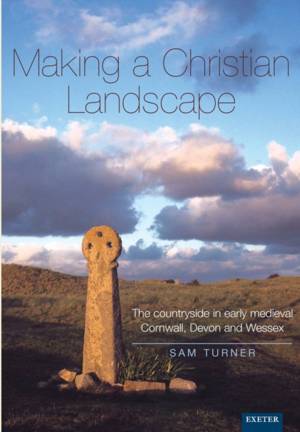
- Afhalen na 1 uur in een winkel met voorraad
- Gratis thuislevering in België vanaf € 30
- Ruim aanbod met 7 miljoen producten
- Afhalen na 1 uur in een winkel met voorraad
- Gratis thuislevering in België vanaf € 30
- Ruim aanbod met 7 miljoen producten
Zoeken
Making a Christian Landscape
How Christianity Shaped the Countryside in Early-Medieval Cornwall, Devon and Wessex
Sam Turner
Paperback | Engels
€ 54,95
+ 109 punten
Uitvoering
Omschrijving
Sam Turner's important new interpretation of early medieval patterns of landscape development traces landscape change in the South West from the introduction of Christianity to the Norman Conquest (AD c. 450-1070). 16 pages of colour illustrations. The book stresses the significance of political and religious ideology in both the 'Celtic' west (especially Cornwall) and the 'Anglo-Saxon' east (especially the Wessex counties of Devon, Somerset, Wiltshire and Dorset). Using innovative new research methods, and making use of archaeology, place-name evidence, historical sources and land-use patterns, it challenges previous work on the subject by suggesting that the two regions have much in common. Using modern mapping techniques to explore land-use trends, Turner advances a new model for the evolution of ecclesiastical institutions in south-west England. He shows that the early development of Christianity had an impact on the countryside that remains visible in the landscape we see today. Accessibly written with a glossary of terms and a comprehensive bibliography, the book will appeal to both veterans and newcomers to landscape archaeology.
Specificaties
Betrokkenen
- Auteur(s):
- Uitgeverij:
Inhoud
- Aantal bladzijden:
- 252
- Taal:
- Engels
Eigenschappen
- Productcode (EAN):
- 9780859897853
- Verschijningsdatum:
- 1/12/2006
- Uitvoering:
- Paperback
- Formaat:
- Trade paperback (VS)
- Afmetingen:
- 174 mm x 246 mm
- Gewicht:
- 635 g

Alleen bij Standaard Boekhandel
+ 109 punten op je klantenkaart van Standaard Boekhandel
Beoordelingen
We publiceren alleen reviews die voldoen aan de voorwaarden voor reviews. Bekijk onze voorwaarden voor reviews.








